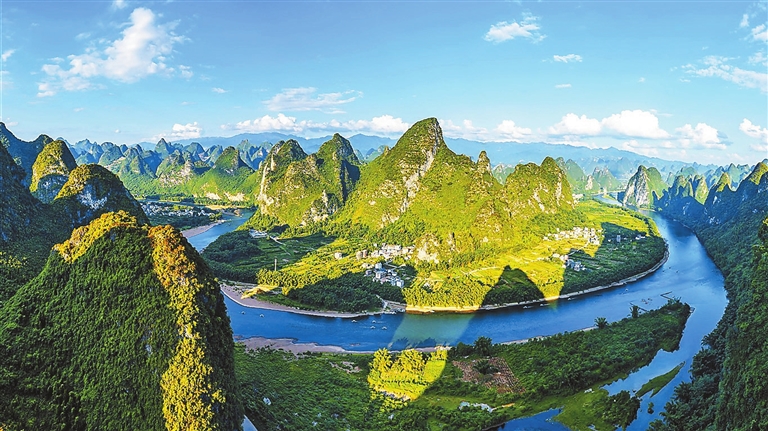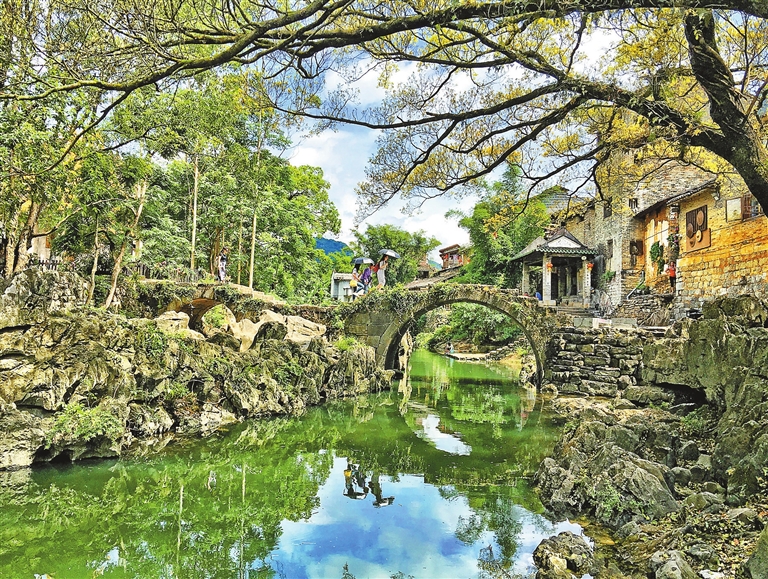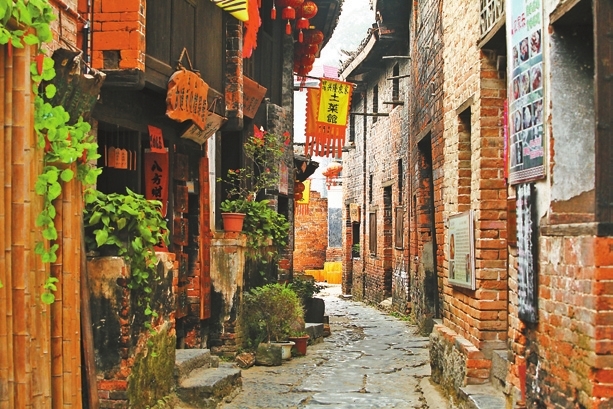



SELF-DRIVING around Guangxi not only means flexibility and time saving. In this autonomous region where you will encounter breath-taking scenery around every corner, only free self-diving enables you to embrace its 360-degree beauty. There is a top driving route that you should not miss for capturing the experience of the stunning rice terraces, peak clusters and river landscapes. The route will take you through the southeast part of Guangxi Zhuang Autonomous Region: Guilin, Fuchuan, Hezhou, Wuzhou, Yulin and Guiping. As a once historically prosperous place, Southeast Guangxi is home to the most beautiful old villages, ancient buildings, tranquil towns, and green rice terraces. It’s also a relatively developed place in the region with good infrastructure. Ten days are recommended for this driving trip. Guilin Guilin’ scenery, which is said to be among the best in the world, has become representative of China’s typical landscape. It often appears in poems and traditional Chinese paintings. However, it not only represents Oriental aesthetics, but is also an important node linking the Central Plain and Lingnan areas. During the Qin (221-206 B.C.) and Han (206 B.C.-A.D. 220) dynasties, Guilin became the first city to possess the culture of the Central Plain. It’s always been the cultural center of Guangxi with literati from the Tang Dynasty (618-907) and the Song Dynasty (960-1279) visiting and leaving inscriptions of poems. Setting out from Guilin, you can first go to Gongcheng Yao Autonomous County to check out the temples warshiping Confucius and Guang Yu, and the Zhou Wei Temple. The gatehouse of Zhou Wei Temple is made from more than 1,000 timbers supporting each other, thus making it an exemplar of ancient buildings. Travel along G65 (the Baotou-Maoming Expressway) toward Zhongshan, exit the expressway at Ertang, then head east along the national highway and you will reach Rongjin Village, which is known for Gui opera and ancient banyan trees. Rongjin Village was first built in the late Tang Dynasty and enjoys a history of 1,000 years. It’s home to 10 old banyan trees, and villagers have named each tree for different blessings. At the entrance of the village there is an old opera stage. Since the reign of Emperor Guangxu (1875-1908) in the Qing Dynasty (1644-1911), the village has paid special attention to the development of Gui opera. Keep driving eastbound for one hour and you will reach the One-hundred-Mile Ink Wash Painting Gallery in Zhongshan, whose scenery is said to be comparable to that of Yangshuo. Covering an area of around 36 square kilometers, the scenic area is endowed with picturesque natural landscapes including lush mountains, karst landforms, jade-colored lakes, and strange-shaped rocks. Fuchuan Continue driving toward the east to Fuchuan, where you will encounter the cannot-miss Xiushui Village, an ancient village since the Ming (1368-1644) and Qing dynasties. It’s also known as Scholars’ Village because in the course of over 1,300 year’s history over 26 jinshi (successful candidates in the highest imperial examinations) and one zhuangyuan (Number One Scholar) were born in this village. The village consists of four small villages, namely Shiyu, Bafang, Anfu and Shuilou, which are connected by the crystal-clear Yudai River. The first ancestor of the village, Mao Zhong, was a jinshi of the Kaiyuan period (712-741), and was also a prefectural governor of Hezhou at that time. Mao’s principle of “maintaining family prosperity through plowing and education” was passed down from generation to generation. Enter the village from the west side, and you will see the Scholar Building and the ancient opera stage facing each other. A statue of Mao Ziru, a zhuangyuan, is enshrined in the Scholar Building. Walking along the Yudai River, you will see an ancient tree named “Cross-River Dragon” which has its strong trunk crossing the river. At the foot of the Xiufeng Mountain lies Bafang Village. At the center of the village there is a space call “Scholar’s Plaza” which is surrounded by old houses with gray bricks and black tiles. While traveling in Fuchuan, you may notice that the phrase “Xiaohe Ancient Path” is mentioned over and over again. In the pre-Qin period, people used this broad valley corridor to travel between Lingnan and Lingbei (the south and the north of the Five Ridges). Hezhou On the third day, travel south to Hezhou. Located to the south of Hunan and the west of Guangdong, Hezhou is home to typical karst landforms and a unique history. Our pals in Shenzhen gave it the nickname: “the back garden of the Greater Bay Area.” When you leave Hezhou and get back to the G65 Baotou-Maoming Expressway, you will soon reach Huangyao Ancient Town, which enjoys a history of nearly 1,000 years. Located in the lower reaches of the Li River, the village covers about 3.6 square kilometers. In Huangyao, there are well-preserved buildings from the Ming and Qing dynasties. In the 3.6-square-kilometer town are scattered more than 300 folk houses, 20 temples and ancestral halls, and 10 pavilions and opera stages, mostly in Ming- and Qing-dynasty styles. Lacking the hustle and bustle of Lijiang and Fenghuang ancient towns, or the common dazzling bar street in most ancient towns across China, this simple and natural place is a true ancient town in China. (To be continued) (Chen Xiaochun) | 
